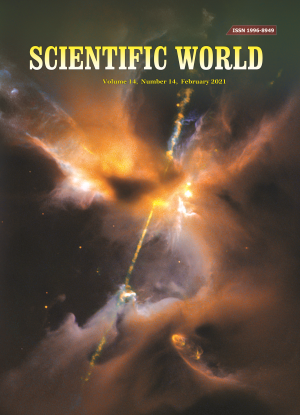Biosorptio Of Cd2+ By Wildtype And Cadmium Resistant, CdR-99 Cell Line Of Chlorella Vulgaris
DOI:
https://doi.org/10.3126/sw.v14i14.35022Keywords:
Biosorption, Heavy metals, Chlorella vulgaris, PollutionAbstract
Removal of heavy metals is very important in wastewater treatment process, due to their toxic effects on the environment. Biological treatment has attracted researchers for years since it has many advantages over physical and chemical methods for removing heavy metals from wastewater. The purpose of this research was to assess the biosorption of Cd2+ by wildtype (WT) and CdR-99 resistant line of Chlorella vulgaris confirming mechanisms of resistance to Cd2+ toxicity and the effect of the variable concentrations of Cd2+ on their growth. Exposure of both algal cell lines to increasing Cd2+ concentrations resulted in progressive inhibition of growth as revealed by growth experiments. The higher ID50 value (38 μM Cd2+) of CdR-99 resistant line exhibited some degree of resistance to Cd2+ toxicity. Metal content was determined by flame atomic absorption spectrometry (FAAS). When exposed to the growth medium containing 50 μM Cd2+, CdR-99 resistant isolate proved to be efficient cell line compared to the WT, in terms of adsorption and removal of Cd2+ at 15 min and 48 hr interval of time respectively. Extracellular Cd2+ adsorption was found significantly higher than intracellular uptake in both the tested cell lines. Total Cd2+ accumulation and distribution between the external and internal cell fractions of the CdR-99 were significantly higher to the WT. Thus, the CdR-99 cell line appeared more resistant to Cd2+ toxicity and hence may be used for wastewater treatment and remediation of metal contaminated sites.




